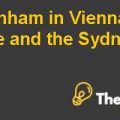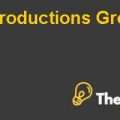
Valuing a Business Acquisition Opportunity Case Solution
Case Description:
What does the Case show?
The case is related to valuing a business acquisition opportunity, which is calculated through calculating the net present value of the projected future cash flows of the business. The cost of capital is used for the valuing which can be taken as the post-acquisition capital structure chosen for the acquired firm or the non-diversifiable risk of the acquired firm. As shown in the case, the acquisition includes two special problems. The life of the business acquisition “project” is essentially infinite and the second, when a growing business is acquired the annual cash flows are often relatively small for 5 to 15 years planning horizon which is usually used in a formal capital expenditure analysis.
The case shows different ways of calculating the terminal value with five different commonly used methods for determining the terminal value of the acquisition opportunity. These five methods that have been shown in the case are as follows:
1. Terminal Value as a Growing Perpetuity Cash Flow.
2. Terminal Value as a Stable Perpetuity Cash Flow.
3. Terminal Value as a Multiple of Book Value.
4. Terminal Value as a Multiple of Earnings.
5. Terminal Value in liquidation.
In the case there is an example for each method on how to calculate, and what do they represent and which is most suitable for what sought of target companies for the acquisition.
What is the primary subject matter of this case?
The primary subject matter in the case involves the different method of calculating the terminal value for the target company in calculating the value of the company. The name of the methods is listed above in the description section. The terminal value of the company is the anticipated value on a certain date in the future.It is used in the multi stage discounted cash flow analysis and the study of the cash flow projections for a period of several years.All these methods have different approaches to calculate the amount of terminal value. The result that arises from these methods is different and the company should use the method which is most appropriate for it depending on the conditions like available data, reasonable growth rates etc.
What are some of the related topics discussed in this case? What are the issues involved?
The related topics that are involved in the case are the valuation of the business, the discounted cash flow method, the cost of capital and the capital structure which should be used to calculate the cost of capital for the business.
The valuation of the business can be calculated through different methods which involve the discounted cash flow method, multiple valuations and the similar transaction analysis. The value of the business is calculated at the stage of the acquisition so that the price paid to the company is accurate and probable.
The cost of capital is the opportunity cost of making a specific investment, it is the rate of return that could have been earned by putting the same amount of money into a different investment with equal risk, and thus, the cost of capital is the rate of return which is required to persuade the investor to make a given investment.
The capital structure is also a related topic in the case, as the capital structure is how the firm finances its overall operations and growth by using the different sources of funds which includes the debt and equity. The capital structure is used to calculate the cost of capital.The appropriate cost of capital reflects the post-acquisition capital structure chosen for the acquired firm and the non-diversified risk of the acquired firm.......................
This is just a sample partial case solution. Please place the order on the website to order your own originally done case solution.










